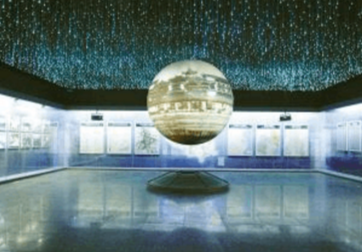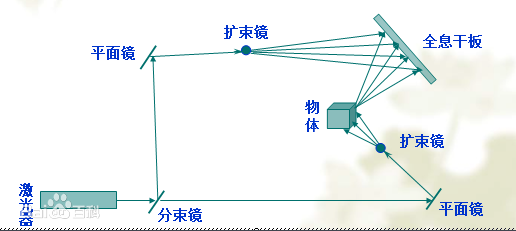Virtual imaging is a term coined by domestic developers. It is a next-generation display technology that projects three-dimensional images in three-dimensional space (images are physical "stereo" rather than purely visual "stereo").
Holographic projection can also be regarded as a kind of holographic image in a broad sense, but the so-called holographic image is only projected on a transparent "holographic plate". So the so-called holographic image is just a flat rather than a stereo image. This is currently the most widely used holographic technology. Still researching, holographic imaging techniques that appear in science fiction. Create a physical, pure 3D image that viewers can view from different angles and even enter the image.
What is virtual imaging?The virtual imaging system dissolves a whole new range of imagery information into real-world scenes. It is a mid-air imaging system that suspends three-dimensional images in the real scene of the cabinet. The virtual imaging system consists of a cabinet, a beam splitter, a spotlight, and a video playback device. Based on the principle of spectroscopic imaging, through the special processing of building a three-dimensional model of the real shot, the moving portrait and the three-dimensional object are optically imaged. The device is superimposed into the real scene, which constitutes a combination of motion and static. Virtual imaging has a more intuitive 3D effect than 3D cinema. Viewers can watch the cool 3D phantom stereo display effects without wearing special glasses, giving a visual impact and a strong sense of depth.

Virtual imaging technology is to dissolve a new variety of image information into real scenes. The system is based on a widescreen environment, scene models and lighting, giving people a visual impact. Then, the moving portraits and the three-dimensional objects are superimposed into the real scene through the optical imaging device, which constitutes a combination of dynamic and static film and television images, and obtains a large amount of information in a small space, spanning time and space, and creativity. This technology, known internationally as "Fanta-View Magic Vision", uses the principle of optical imaging to synthesize the images (human and object) captured by Musk camera technology in the movie and the main model landscape in the set box. The exhibition shows the theme to be expressed, the story of the repertoire, etc., which can be vividly reflected. The sound and color are unpredictable and equipped with special effects such as sound, light and electricity. It is very intuitive and impressive.
Holographic projections can be divided into the following categories. Transmission holographic projections, such as those invented by Lith and Upat Nix, by illuminating a holographic projection film with a laser and then observing the reconstructed image from another direction. Later on, the rainbow holographic projection can be illuminated with white light to observe the reconstructed image. Rainbow holographic projection is widely used in areas such as credit card security and product packaging. These types of rainbow holographic projections typically form a surface relief pattern on a plastic film and then re-image the image by passing an aluminum film on the back side through the film. Another common holographic projection technique is called reflection holographic projection, or Danny Suk holographic projection. This technique can reconstruct a color image by reflecting it in the same direction as the observer by using a white light source to reconstruct the image. Mirror holographic projection is a related technique for fabricating three-dimensional images by controlling the motion of the mirror on a two-dimensional surface. It constructs a holographic image by controlling reflected or refracted light, while Geber's holographic projection reconstructs the wavefront by diffracting light.
The key reason for the holographic projection to thrive in a short period of time is the mass production of low-cost solid-state lasers, such as those used in DVD players and other commonly used devices. These lasers have also greatly contributed to the development of holographic projection. These inexpensive, small-sized solid-state lasers can compete with the large, expensive gas lasers originally used for holographic projection under certain conditions, allowing researchers with lower budgets, artists, and even amateurs to participate. To the holographic projection research.
In June 2014, a startup in California, USA, is developing a 3D holographic projection chip. By the end of 2015, smartphones will have 3D projection capabilities. Developed a three-dimensional holographic projector with a tablet size of up to 5000 PPI, which precisely controls the brightness, color, and angle of each beam.
Only one chip is needed to project an acceptable three-dimensional hologram, but as long as the number of chips is increased, a more complex three-dimensional object can be projected, and the details are more detailed. The development of this chip and technology is still in its infancy. The first chip, aimed at holographic projection of two-dimensional images, was delivered to handset manufacturers in the summer of 2015.
The second projection chip they developed will enable holographic 3D projection. The stereo image can float in the air and look like a real object. A few months after the first chip is introduced, the second chip will begin to enter production.
In addition to smart phones, the company's three-dimensional holographic projection chip will also enter various display devices, such as televisions, smart watches, and even "holographic desktops." By then, the era of 3D holographic projection will really come.
Front-projected holographic display, also known as virtual imaging technology, is a technique for recording and reproducing the recording and reproduction of a true three-dimensional image of an object using the principles of interference and diffraction.
The first step is to record the light wave information of the object by using the interference principle. This is the shooting process: the object forms a diffuse object beam under laser irradiation; the other part of the laser beam is used as a reference beam to the holographic film, and the object beam is superimposed. Interference is generated to convert the phase and amplitude of each point on the object's light wave into a spatially varying intensity, thereby recording all the information of the object light wave using the contrast and spacing between the interference fringes. After the film on which the interference fringes are recorded is subjected to processing procedures such as development and fixing, it becomes a hologram, or hologram.

Holographic projection shooting process
The second step is to use the principle of diffraction to reproduce the light wave information of the object. This is the imaging process: the hologram is like a complex grating. Under the coherent laser illumination, the diffracted light wave of a linearly recorded sinusoidal hologram can generally give two The image, the original image (also known as the initial image) and the conjugate image. The reproduced image has a strong stereoscopic effect and has a real visual effect. Each part of the hologram records the light information of each point on the object, so in principle, each part of it can reproduce the entire image of the original, and multiple different images can be recorded on the same film by multiple exposures. And they can be displayed separately without interference.
Wind Mill Transformer, Special Designed Transformer, Special Designed Wind Transformer, OEM Wind Transformer
Hangzhou Qiantang River Electric Group Co., Ltd.(QRE) , https://www.qretransformer.com